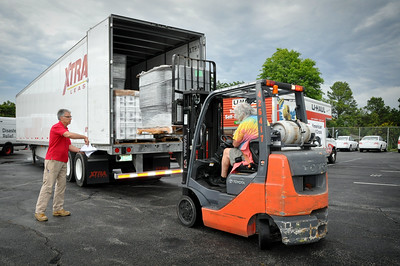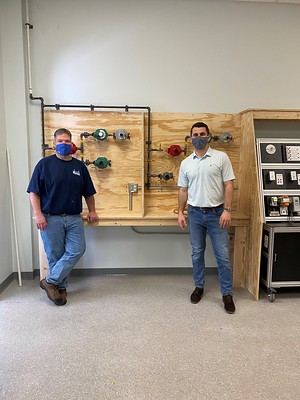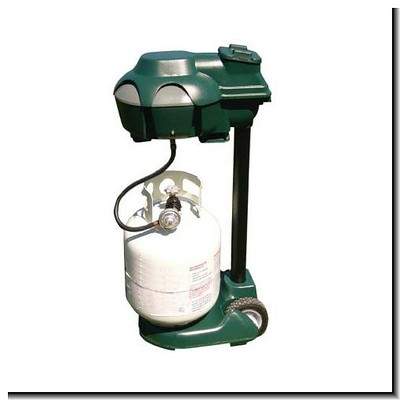
Propane tank straps play a crucial role in ensuring the safety and efficiency of forklifts, particularly those that rely on propane as their primary fuel source. These straps are responsible for securely holding the propane tank in place, preventing accidents and damage due to tank movement or dislodgement. In this comprehensive guide, we will explore the factors to consider when choosing propane tank straps for your forklift, the different types of straps available, key features to look for, proper installation and maintenance, and compliance with safety regulations and standards.
Importance of Propane Tank Straps for Forklifts
Propane tank straps are a critical component in ensuring the safety, stability, and efficiency of forklifts that utilize propane as a fuel source. These straps serve several important functions, making them indispensable for proper forklift operation:
- Securing the propane tank: The primary function of propane tank straps is to hold the propane tank securely in place on the forklift. This prevents the tank from moving or becoming dislodged during operation, which could lead to accidents, damage, or fuel leakage.
- Stability and balance: Properly installed and secured propane tank straps help maintain the overall stability and balance of the forklift. An unstable propane tank can cause the forklift’s center of gravity to shift, leading to potential tipping hazards or difficulties in maneuvering the equipment.
- Safety and accident prevention: Forklifts are used to transport heavy loads, and any sudden movement or dislodgement of the propane tank can create dangerous situations for operators and workers nearby. Propane tank straps minimize the risk of accidents by keeping the tank stable and secure during operation.
- Compliance with safety regulations: Occupational Safety and Health Administration (OSHA) guidelines and other applicable safety standards often include specific requirements for propane tank straps, such as proper installation, maintenance, and inspection procedures. Using the correct straps and following these guidelines helps ensure compliance and promotes a safe work environment.
- Prolonging the lifespan of equipment: Properly secured propane tanks minimize the risk of damage to the forklift and its components, ultimately prolonging the lifespan of the equipment. Regular inspection and maintenance of propane tank straps also help identify potential issues early, allowing for timely repairs or replacements.
- Maintaining fuel efficiency: A securely fastened propane tank allows for consistent fuel flow to the forklift’s engine, ensuring optimal fuel efficiency and performance during operation.
Propane tank straps play a vital role in the safe and efficient operation of propane-powered forklifts. By securing the propane tank, maintaining stability and balance, preventing accidents, and ensuring compliance with safety regulations, these straps contribute to a safer and more productive work environment.
Factors to Consider When Choosing Propane Tank Straps
A. Forklift make and model
The type of forklift you operate has a significant impact on the propane tank straps you will need. Different forklift models and manufacturers have varying specifications and requirements for propane tank straps. Make sure to consult your forklift’s manual or contact the manufacturer for guidance on selecting the appropriate straps.
B. Propane tank size and dimensions
Propane tanks for forklifts come in various sizes, which affect the dimensions and compatibility of propane tank straps. Be sure to measure your propane tank accurately and select straps that can securely hold it in place.
C. Workplace conditions and environment
The conditions in your workplace, such as temperature, humidity, and exposure to chemicals or corrosive substances, can influence the durability and longevity of your propane tank straps. Choose materials that can withstand the specific conditions in your work environment.
D. Frequency of use and maintenance schedule
Forklifts that are used more frequently may require more robust and durable propane tank straps. Additionally, a more rigorous maintenance schedule may be necessary to ensure the straps remain in good condition and perform optimally.
Types of forklift propane tank straps
A. Metal straps
Steel: Steel straps are strong, durable, and can withstand heavy loads. They are suitable for forklifts that are used frequently or in harsh environments. However, steel straps may be prone to corrosion, especially in humid conditions or when exposed to chemicals.
Aluminum: Aluminum straps are lightweight, corrosion-resistant, and easy to install. They are ideal for forklifts used in environments where corrosion is a concern, such as in coastal areas or chemical plants. However, they may not be as strong as steel straps and may require more frequent inspection and replacement.
B. Non-metal straps
Nylon: Nylon straps are lightweight, flexible, and resistant to chemicals, making them suitable for use in various environments. They are also easy to adjust and install. However, they may not be as durable as metal straps and may need more frequent inspection and replacement.
Polyester: Polyester straps are strong, resistant to chemicals, and less prone to stretching than nylon straps. They are also lightweight and easy to install. However, like nylon straps, they may require more frequent inspection and replacement compared to metal straps.
C. Comparing the advantages and disadvantages of each type
When choosing the right propane tank straps for your forklift, consider the specific needs and requirements of your workplace. Metal straps, such as steel and aluminum, are generally more durable and capable of supporting heavier loads, while non-metal straps, like nylon and polyester, offer greater flexibility and chemical resistance.
Key Features to Look for in Propane Tank Straps
- Durability and strength: Choose propane tank straps made from high-quality materials that can withstand the demands of your workplace and provide long-lasting performance.
- Corrosion resistance: Opt for straps that are resistant to corrosion, particularly if your work environment is humid or involves exposure to chemicals or corrosive substances.
- Ease of installation and adjustment: Select straps that are easy to install, adjust, and remove. This will save time and effort during routine maintenance, inspections, and propane tank replacements.
- Compatibility with your forklift and propane tank: Ensure that the straps you choose are compatible with your specific forklift model and propane tank size. Consult your forklift’s manual or contact the manufacturer for guidance on selecting the appropriate straps.
Proper Installation and Maintenance of Propane Tank Straps
A. Importance of correct installation
Proper installation of propane tank straps is crucial to ensure the safety and efficiency of your forklift. Incorrectly installed straps may cause the propane tank to become dislodged, leading to potential accidents, damage, or fuel leakage.
B. Regular inspection and maintenance schedule
To maintain the integrity of your propane tank straps, establish a regular inspection and maintenance schedule. This should include checking for signs of wear, damage, or corrosion, as well as ensuring the straps are securely fastened and properly adjusted.
C. Identifying and addressing signs of wear and damage
During inspections, look for visible signs of wear or damage, such as fraying, cracks, or corrosion. If you notice any of these issues, replace the straps immediately to prevent potential accidents or equipment failure.
Compliance with Safety Regulations and Standards
A. Adhering to OSHA and other relevant guidelines
To ensure the safety of your workplace, it’s essential to comply with Occupational Safety and Health Administration (OSHA) guidelines and other applicable safety standards. These may include specific requirements for propane tank straps, such as proper installation, maintenance, and inspection procedures.
B. Ensuring proper training for forklift operators and maintenance personnel
To promote a culture of safety in the workplace, ensure that all forklift operators and maintenance personnel receive proper training on the installation, use, and maintenance of propane tank straps. This will help reduce the risk of accidents and ensure that everyone is familiar with the correct procedures for handling and maintaining propane tanks and straps.
C. Promoting a culture of safety in the workplace
Foster a workplace culture that prioritizes safety and encourages all employees to follow best practices for using and maintaining propane tank straps. This includes providing ongoing training, implementing regular inspection schedules, and ensuring that employees have access to the appropriate resources and support.
Conclusion
Selecting the right propane tank straps for your forklift is essential for maintaining safety and efficiency in the workplace. By considering factors such as the type of forklift, propane tank size, workplace environment, and frequency of use, you can make an informed decision on the best straps for your needs. Additionally, proper installation, regular maintenance, and compliance with safety regulations will help ensure that your propane tank straps continue to perform optimally and contribute to a safe and productive work environment.

Mike is an experienced propane technician with over 15 years of professional experience in the field. He has dedicated his career to helping customers with their propane needs, from installation to maintenance and repair. Together with Jeremy, he co-founded this website to provide useful information and guidance to customers seeking reliable propane services.



